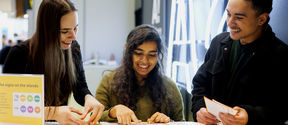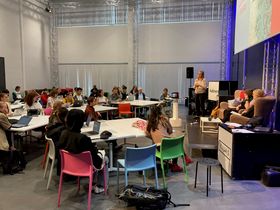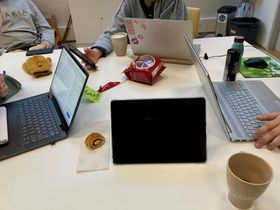Quality teaching at Aalto
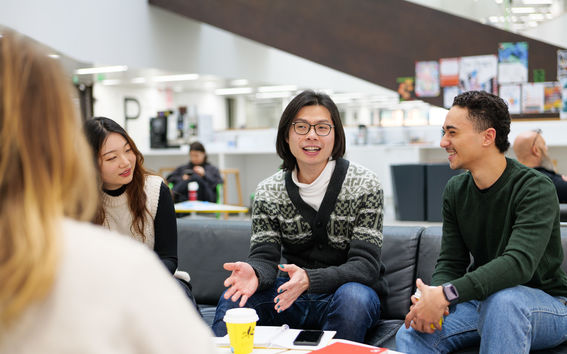
Hi all, it’s good to start writing blogs again after all the busy periods I have recently (for those who are interested, I have written a couple of blogs before so feel free to check it out if you are interested). For this blog, I will be focusing more on the things I appreciate from my study at Aalto University as a master’s degree student in the Water and Environmental Engineering program or WAT program.
In my program, the first thing that happened to me was being assigned a personal professor to mentor me through the master’s degree. Each professor will have 4-5 students in their care, and they will arrange meetings throughout the academic year to check up with the students on their portfolios. This portfolio includes the expectations the students want from the degree both from their study plan and their future career paths. These sessions are made so that the students can ask questions to their mentor to develop their learning outcomes to their fullest. The advice I got from my professor was invaluable and changed the ways I want to build my career.
The professors in my department are passionate about their research and teachings with some making innovative and high-quality publications. Every professor is required to teach a course so you will get to interact and learn from them as well. Another unique point in Aalto culture is that the hierarchy between you and the professors is really low. You can have a chat while drinking coffee with your professors or even see them dancing at parties! They are also willing to help guide you with your thesis and career opportunities or get a paid thesis position. My personal feelings about the professors in the WAT program are that they are humble, easy to contact, and passionate about what they do.
Moreover, the way Aalto teaches is completely different from what I have experienced for my entire education. The schools and universities where I come from focus on lecture-based teaching. The classes are designed to have the lecturer talks, for sometimes 3 hours, and you sit there and listen to them. However, in Aalto, the education combines what is called Problem-Based Learning or PBL with the lectures. In PBL, the focus shifts from the lecturer to the students. Students have the chance to work on real-life problems whether that is through group work, labs, modeling, or brainstorming/discussion. By combining these two ways of teaching Aalto includes all the students to learn in different ways, i.e., through lectures, hands-on training, or real-life projects with private companies.
Aalto also emphasis a lot on internationality and multi-disciplinarity. For the master’s degree, all programs are being offered in English. All the teachings and materials are in English as well as the contacts and services in the university. Students are also free to take any courses from any department from every university in Finland. This means that if you’re studying engineering like I do, and are interested in drawing or wood design, you are more than welcome to take that course since Aalto wants their students to have inter-disciplinary mindsets. Doing an exchange while studying is also highly encouraged by the university. Through an enormous amount of connections, you can choose to study 1 or 2 semesters abroad all over the world e.g. South/East/Southeast Asia, North/South America, Europe and Australia. And you can get a grant to do an exchange!
Lastly, I want to mention about the work-life balance here in Aalto. With their focus on students and how they learn, Aalto provides students (in my opinion) a customized learning plans. You can choose how much effort and pace you want to put into your study and preserve your work-life balance if you prefer. Students can take it slow and take multiple years to finish their studies while working or finish everything quickly. Granted that If you are a scholarship student for a master’s degree, the scholarship lasts for 2 years with the possibility of extending your study for another semester. The culture of working while studying is also quite prevalent in Aalto. In my academic year, 75% of the students were working while studying and Aalto tries to incorporate that fact into the studying so that students will have time to work, for example, usually, Fridays don’t have any lectures so that the students can work on that day.
All in all, with the experience of studying in Thailand and in China, I can feel that Aalto really cares about their students and the way they structure their future education and career paths. So many people that I have talked to, including me, have the same feeling that we feel safe in Aalto and we feel like it’s an extremely nice atmosphere which makes me feel like I don’t want to leave this environment.
- Best
Useful links on Aalto.fi
Show other posts from this blog

Internationality at Aalto University
Bachelor's student Owein discusses internationality at Aalto.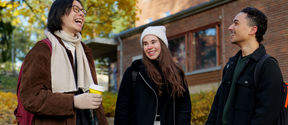
Living in Otaniemi: A Key to an Easy Student Life
Master's student provides insights into the various housing options available and shares her experience of living on campus.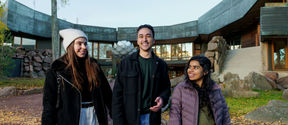
Best Student Life is Found at Aalto
Bachelor's student Amr goes deeper into why he chose Aalto, and how Aalto’s student life and activities have shaped his experiences.